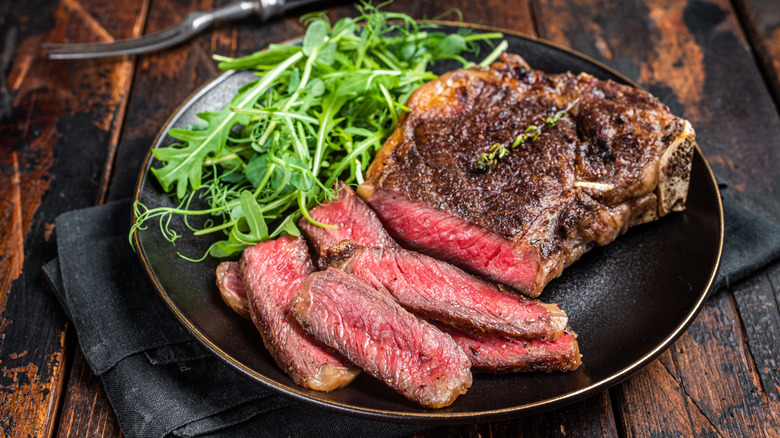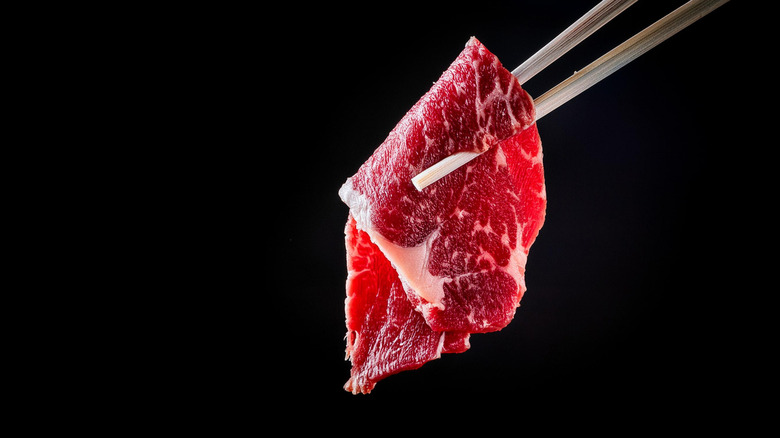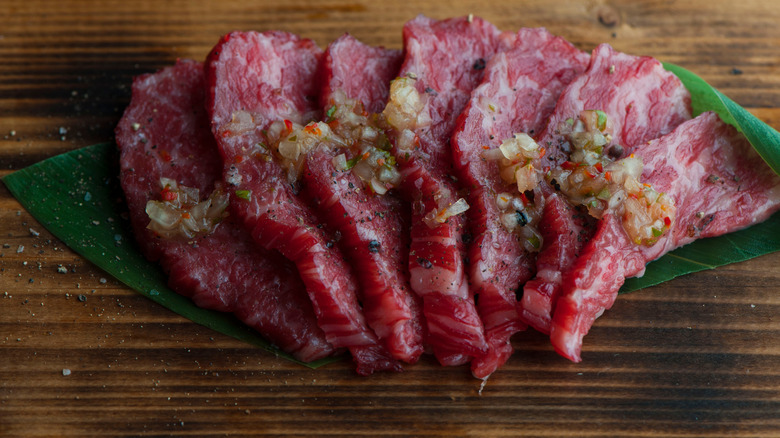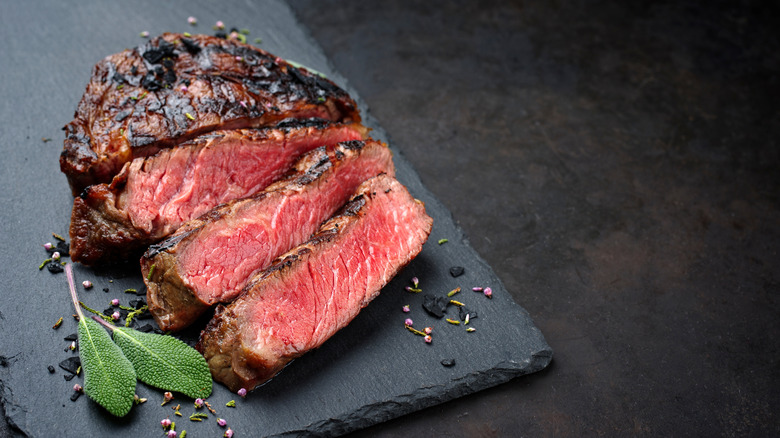What Exactly Is Wagyu Beef?
Food is a beautiful gift, whether it's from someone else or a special treat to yourself. And one luxurious gift of food you can receive is steak. Not just any steak, but the real cream of the crop: Wagyu beef.
The thing about Wagyu beef is that it's so expensive that it's reached a near-mythical status as a food. You typically find it on ultra high-end menus at fancy restaurants for exorbitant prices (one treatment I recently found was $210 at a local Chicago steakhouse). But these days, it's possible to find a few cuts at specialty butchers, and more commonly, Costco, which seems like a wild place to find such a luxury good.
The issue is its cost. The sky's the limit, plus, it's hard to know if you're getting the right thing sometimes. The nomenclature for high-end beef can be confusing, and with restaurants tossing the word "Kobe" and "Wagyu" around with what feels like reckless abandon, the market doesn't make it any easier to understand.
First off, what is wagyu?
This part, unfortunately, gets a little confusing. There's a couple words to keep track of, and that's Kobe and Wagyu. The term "Wagyu" refers specifically to four Japanese breeds of cattle, which are Japanese Black, Japanese Brown, Japanese Poll, and Japanese Shorthorn.
Kobe is a type of Wagyu beef (sort of like how bourbon is a whiskey, but not all whiskeys are bourbon). It's a type of Wagyu that's from a specific strain, Tajima, of the Japanese Black breed. Kobe cattle are raised in Hyogo Prefecture in Japan, the capital city being Kobe, which is where you get that name. Got it?
What that means is legitimate Kobe beef is extremely rare and hard to get in the U.S. The list of restaurants and purveyors that sell the certified deal is on the Kobe Beef Association's website, and as you can see, the list isn't terribly long. So if you're looking for genuine Kobe beef, make sure you're looking at the fine print to learn the provenance of your steak.
Don't feel bummed out if you can't get Kobe, because there's other stuff from different prefectures in Japan that is on the exact same level of deliciousness.
The grading system for Wagyu beef
The Wagyu grading process is extremely rigorous and complicated. To simplify it, let's break it down to the two components of the grade: the letter portion and the numeric one.
When it comes to Wagyu beef, A5 is the highest grade you can get. The letter A denotes the yield grade (which is how much usable meat is on the cow, with C being the least on the scale), and the number 5 (on a scale of 1-5) is a result of multiple factors, like marbling, color, texture, and fat quality.
What is American Wagyu and how is it different from Japanese Wagyu?
American Wagyu isn't exactly the intensely marbled stuff you can get in Japan, but rather a crossbreed between Wagyu and American Angus beef breeds. Hilariously, you might see this type of beef labeled "Wangus." If you learn anything from this piece, I hope it's the word Wangus.
Because American Wagyu is more lean than Japanese Wagyu it won't typically have that snowy marbling to it, but it'll be delicious nonetheless. Think of it as a high-end prime steak and enjoy it for its beefy and juicy qualities over the buttery and fatty characteristics of Japanese Wagyu.
Now that you know what to look for when you're perusing through fancy steaks, treat yourself to something good — I'm sure whichever steak you end up picking will end up being delicious.



